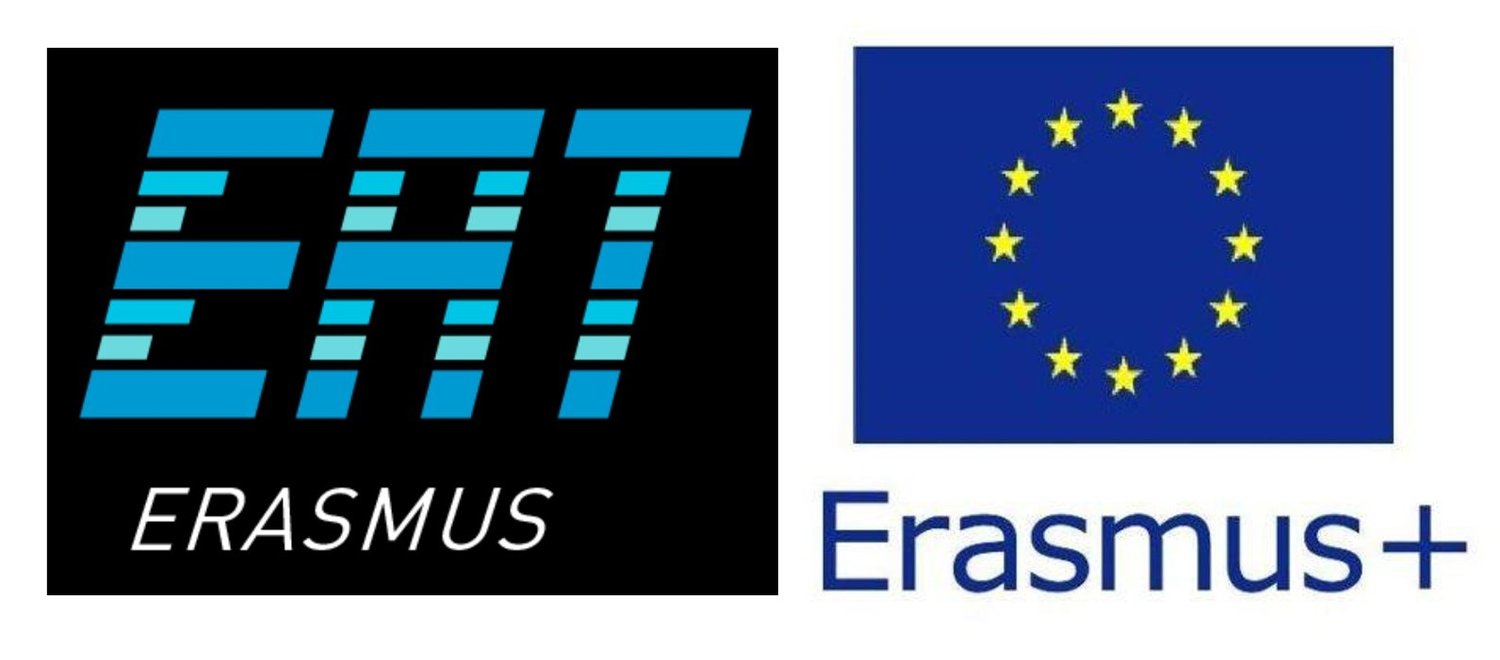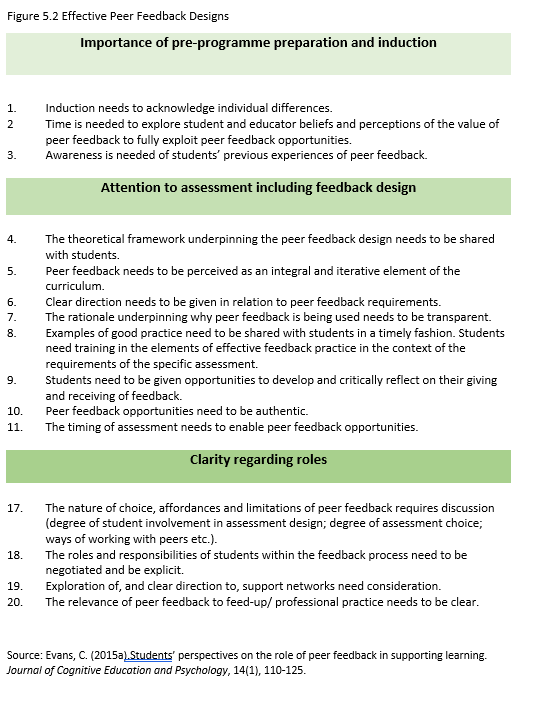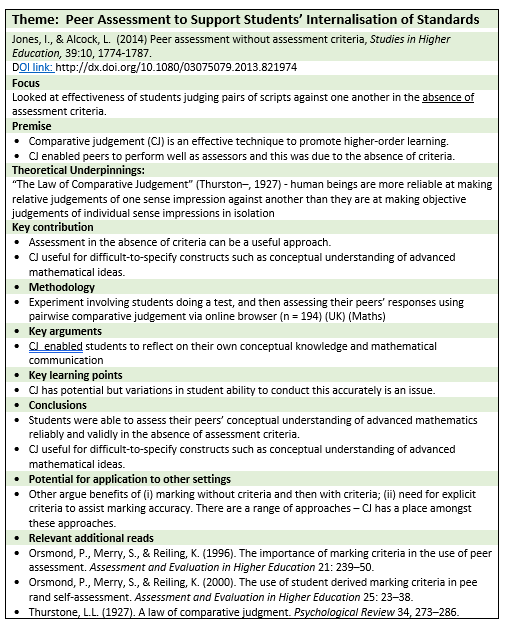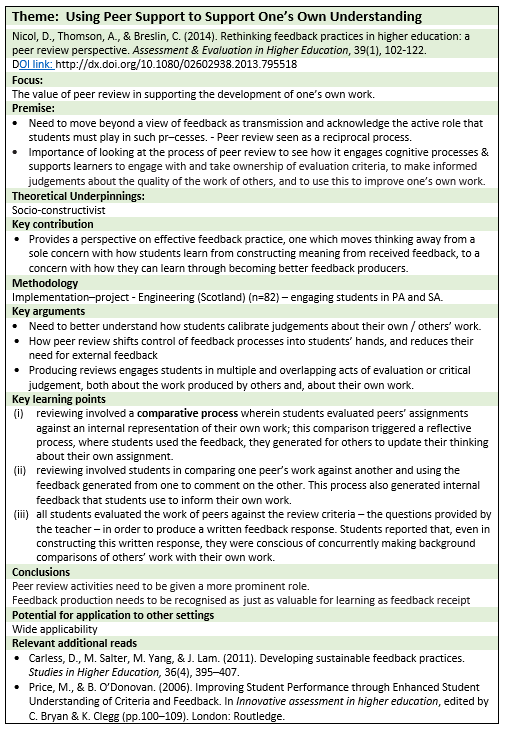5.10 Peer-Assessment Supporting SRL
Peer assessment is linked with enhanced learning outcomes given the power of peer assessment to support an individual’s understanding of assessment for themselves through assessing others (Schneider & Preckel, 2017). In line with this perspective, Li et al. (2012) found that the quality of students’ work was related to the quality of feedback they gave to others and not the quality of feedback they received. What was important was the ability of students’ to critically evaluate the feedback they received and be able to utilise constructive feedback while also being able to ignore misleading information.
Peer assessment has been found to enhance assessment skills when designed carefully and this includes ensuring sufficient training is provided in it (Khan et al., 2017). The power of peer assessment lies in how it is configured to include, the extent to which it is developmental, trains students in the giving and receiving of feedback, is integrated into the curriculum as part of a continuing process, enables students to have autonomy over the process, measures process and outcomes, and engages students in authentic assessment (Evans, 2015a). This developmental nature of peer assessment can be referred to as peer engagement (CowaIreme, 2005).
While the relationship between self-regulated learning and peer assessment is complex. Guidelines for supporting peer engagement are summarised in Figure 5.2 and also confirmed in Panadero, Jonsson and Strijbos’ (2016) utilisation of Topping’s (2003) work in describing a formative version of peer assessment (PA):
1. Clarifying the purpose of PA, its rationale and expectations to the students
2. Involving students in developing and clarifying assessment criteria
3. Matching participants (e.g., individuals, groups) in a way that fosters productive PA
4. Determining the PA format (e.g., rating with or without comments) and mode of PA interaction (e.g., face-to-face or online)
5. Providing quality PA training, examples and practice (including feedback about PA)
6. *Providing rubrics, scripts, checklists, or other tangible scaffolding for PA
7. Specifying PA activities and timescale
8. Monitoring the PA process and coaching students.
*Engaging students in the development of rubrics and addressing student perceptions of peer assessment (e.g., the ‘uncomfortableness’ often associated with peer learning activities) (Evans, 2015a) are also important.
Peer engagement activates self-regulation, co-regulation and shared regulation possibilities. In self-regulating individuals how they seek and make use of feedback is important. In co-regulation, support may be gained from more knowledgeable others, and in genuine shared regulation opportunities, learners develop the skillsets to regulate as a team with shared goals so that they ‘pivot together’.
Co-construction of understanding through the use of tools such as co-created rubrics and ongoing developmental opportunities to build shared understandings of quality are known to be helpful. Fraile et al. (2017) found that students engaged in co-creating rubrics did better than those who had a rubric imposed on them, arguing that the former approach was more conductive to activating appropriate learning strategies.
Jones et al.’s (2017) work demonstrates the power of a structured and developmental approach to using rubrics on student performance. They describe implementation of 4 interrelated activities: (1) deconstruction of the rubric and standardising the marking method; (2) providing examples and exemplars; (3) peer review; (4) self-review; and (5) use of a reflective diary. Similarly, Gikandi and Morrow (2016) discuss the positive benefits of engaging students in open discussion around on-going work and the importance of clear guidance and focused opportunities to facilitate such sharing.
Key Concepts: peer engagement (formative) vs peer assessment (summative), trust, training, maintaining quality, authentic use of peer assessment
ACTIVITIES
Review Figure 5.2 (Effective Peer Feedback Designs) in relation to preparing students to engage in peer feedback activities.
1. Map with students where peer activities are within the module and how each activity builds on the next to support learning.
2. How are students supported to reflect on the quality of the feedback they give?
3. How are students encouraged to critique the feedback that they receive?






